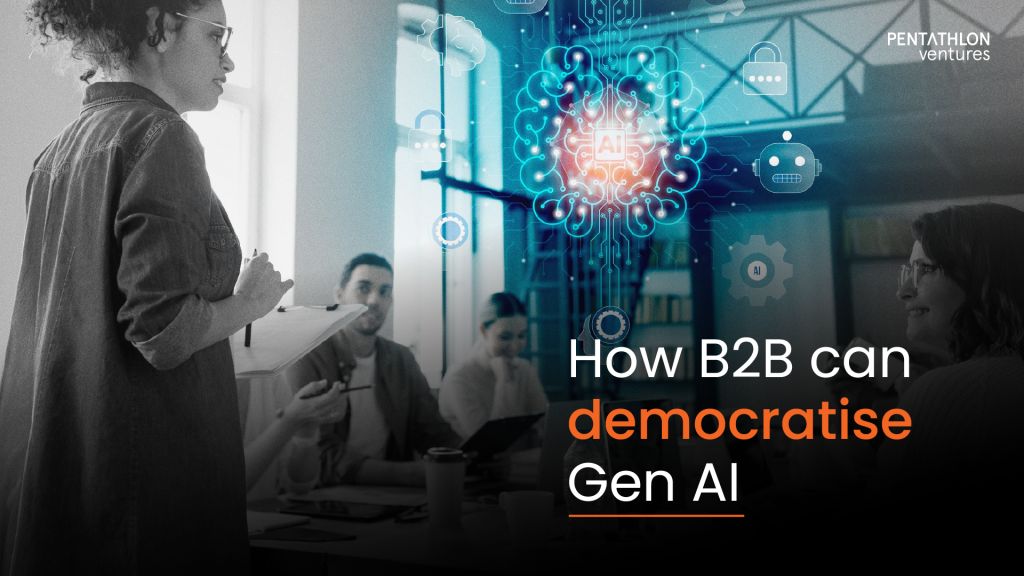In the previous article, I had hoped for the democratisation of AI/GenAI, so that it does not remain the preserve of Tech giants and Indian start-ups have a fair chance. Historically, attempts to democratise Tech have repeatedly failed with a few large companies ending up controlling everything. Looking at the history of the internet, Web 1 was to democratise information, but search engines ultimately took over. Web 2 was to democratise the creation of information, but social media giants took over. Web 3 was to democratise ownership of information, but then GenAI came along and the power was back with the few large players who had the data and the resources to build LLMs.
However, start-ups have been able to answer the question “What if Google does what you are doing” quite well. Smaller, nimbler companies have been able to build solutions better than the giants in their specific niches and thus found their place in the marketplace. The big question is whether that possibility exists with GenAI. And if it does, what are the ways smaller companies can hold their own against the giants? This is what I cover in this, the 3rd article of this series.
Building on top
The fact is that LLMs will be built by the Tech giants, with the huge volume of data they have because of their B2C access across the world. It is impossible to beat them on that front. If you cannot beat them, join them! Build on top of those LLMs. There are specific ways to do that, such as prompt engineering (asking rightly worded questions), fine-tuning (providing more specific data to further train the model), and RAG (retrieval augmented generation – providing up-to-date and trustworthy information that the model can use without training). All of these use special knowledge of the particular domain, which smaller companies can have better than the Tech giants. Sure, the breadth to answer any and all questions will not be there. But for a particular niche, the answers may “hallucinate” less and be more reliable than the LLMs.
Bringing in efficiency
GenAI is a brute-force method of solving a problem, and we have seen in earlier articles the challenges with this approach. One, it can be very costly, given the data, compute and energy required by GenAI. Secondly, it may be an overkill! One does not need GenAI to know 2+2=4! Ok, that’s too simplistic. However, the principle applies to real-life problems. Over the years, a huge body of knowledge has been captured into rules that we know as science (including social science) and engineering. There is an opportunity for smaller companies to build their solutions with a judicious combination of these rules and GenAI for much more efficient problem-solving, using the best of both worlds.
Small is beautiful
The next logical step is SLM or a small language model. If you are solving a problem in a niche, do you really need to boil the ocean? Why not use an SLM that is fine-tuned for a specific vertical such as healthcare, instead of a much broader-based LLM? This approach builds GenAI solutions at a fraction of the cost of the LLMs and produces better solutions.
Leveraging enterprise data
While the Tech giants are unbeatable when it comes to global social data, the data they don’t have with them is the Enterprise data, which businesses have with them internally. This data may be even larger than the public social data! Further, it turns out that this data is much more relevant for many of their business problems than the social data that Tech giants have. Needless to say, much better GenAI solutions for enterprise problems can be built with the enterprise data, using all the mechanisms mentioned above – based on the special knowledge of the industry, judiciously blending rules of their business and fine-tuning SLMs with their own data.
B2B democratises
Putting all the points listed above together, it is clear that the best chance for small companies to make their mark is B2B. For the Tech giants, their data comes from the public and their results are also for the public. So, B2C will always be ruled by the Tech giants. But when it comes to niches, smaller companies can still hope for a level playing field and, in fact even beat the giants. So if an investor asks “What if OpenAI does it tomorrow”, GenAI entrepreneurs can have an answer.
In the architecture of GenAI, the lower-most level is the GPUs, the infra. But even the layer above that, which is the LLMs, may become commoditised infra. All the different LLMs from different Tech giants are ultimately going to produce undifferentiated outputs, very similar to what has happened with Cloud infra today. It is the third layer above these two, focused on industry use cases, which will be captured by the smaller niche players, through all the mechanisms mentioned above.
Larger AI companies are trying to provide solutions for this layer such as co-pilots that can work across verticals. But the success so far is limited to automation of tasks. The actions to put together the workflow still remain with humans, as it requires doing the more critical decision-making. Building AI agents for this layer will truly change the game, which is where niche players with their domain knowledge will be successful. Now they can automate entire functions, which can allow them to commit to outcomes!
It goes without saying that the larger enterprises will go to the larger AI solution providers and the SMBs to the smaller solution providers. But it is very likely that the SMBs will be quicker in their decision-making as they can see the opportunity to leapfrog the incumbent leaders in their spaces with the help of AI/GenAI.
One caveat: Within B2B there are horizontals (such as HR, Sales, Marketing) and verticals (Manufacturing, Healthcare etc.), and it should be clear that smaller companies will have a better chance with Verticals, as data may be much more public in case of Horizontals. One way to beat the Tech giants even there is to build products across multiple platforms, as the tech giants typically would like to lock in their users within their own platforms.
In conclusion
With our focus on B2B Tech at Pentathlon, and that too at the early revenue seed stage, one wondered if they had any role to play in the seemingly large-player world of GenAI. Happily, as in the past, they clearly have an opportunity as discussed above. But they must be very strong in using GenAI technology and even more importantly, they must focus on a niche, where they have strong domain knowledge.
Having presented these 3 articles to you, now it’s time for us to put all this together and present our strategy at Pentathlon. How do we navigate this fast-changing world of AI/GenAI? What will we do and not do? And that will be the topic of my last article of this series.




